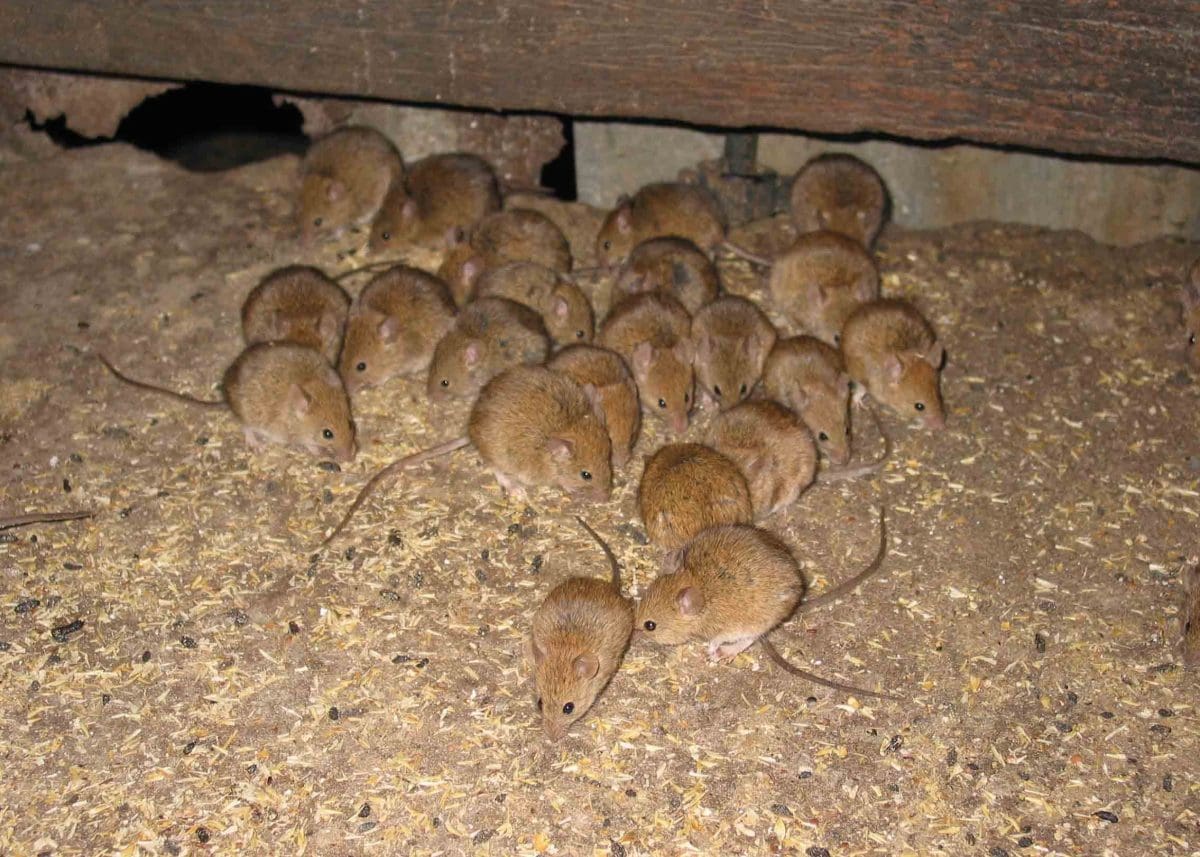
Mouse populations are on the rise in some WA grain-growing regions. Photo: DPIRD
LANDHOLDERS in Western Australia’s Wheatbelt have been urged to step up monitoring and reporting of mouse populations and to take action to protect this year’s cropping program.
Populations of mice have built up in the Mid West over the summer, particularly in the Northampton district, while Ravensthorpe also continues to be a hotspot.
WA’s Department of Primary Industries and Regional Development’s (DPIRD) Season 2022 webpage has advice to help landholders reduce mouse populations, as well as links to further information on control measures.
DPIRD Esperance manager Brendan Nicholas said it was important for landholders to control
mouse numbers as best they could now so populations did not threaten this year’s crops.
“Mice can cause damage at all stages of crop development, including seeding, tillering, during
grain development and mature grain, so it’s best to get on top of control measures before
seeding starts,” Mr Nicholas said.
“Damage tends to be most severe at sowing, so it is critical to control mice as the crop is being
sown.
“Baiting will help to minimise the potential for damage.”
Landholders are encouraged to monitor paddocks to determine the extent of mouse populations and to report observations to FeralScan’s Mouse Alert Service to aid regional intelligence.
“Monitoring and detection are essential to achieve effective control and can include the use of
active burrow counts, census or chew cards and trapping to determine the number of mice
present,” Mr Nicholas said.
“Indications that mice are present include numerous burrows, mouse droppings and more prey
in the vicinity.
“Late afternoon and evening are the best time to monitor, using at least three 100-metre long
by 1m wide active burrow searches, lightly covering the mouse holes and revisiting them
the next morning to record how many have been reopened.”
Even if mice are not observed, landholders are encouraged to monitor again prior to seeding if
mice are expected to pose a problem.
Articles on the economic considerations for mouse control and diagnosing mouse damage are
available via DPIRD’s Season 2022 webpages, as well as a link to the Grains Research and
Development Corporation’s Mouse Management webpage.
Mice are not a declared pest in WA, so it is up to landholders to implement control measures to protect their crops and those of their neighbours.
DPIRD recommends the use of recently developed 50-gram-per-kilogram zinc phosphide baits.
Landholders are advised to adhere to strict label requirements governing the use of zinc phosphide baits ,and to ensure livestock and pets are restrained to reduce the risk of poisoning.
Good on-farm hygiene is also imperative to reduce the risk of mouse damage.
This includes cleaning up spilt grain around sheds and silos, mouse-proofing grain storage and stockfeed
areas.
Grazing stubble can also be useful to clean up grain lost or left behind in the harvesting process.
Source: DPIRD

HAVE YOUR SAY